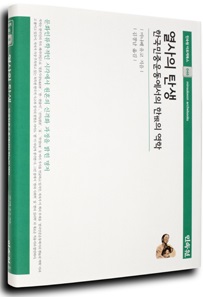
Title
열사의 탄생 - 한국민중운동에서의 한의 역학 (The Birth of Martyrs—The Dynamics of “Resentment” in the Korean Popular Movement, Korean translation)
Size
344 pages
Language
Korean
Released
May 01, 2015
ISBN
978-89-285-0777-1
Published by
Minsokwon
Book Info
See Book Availability at Library
Japanese Page
The original text of The Birth of Martyrs—The Dynamics of Resentment in the Korean Popular Movement was published in 1997 by Hirakawa Shuppan. The idea for this research traces back to 1991, when Manabe, while staying in South Korea at the end of Roh Tae-woo’s presidency, witnessed the assault and battery of a student by an auxiliary police resulting in the student’s death during a demonstration; this led to students’ and laborers’ suicides by fire in condemnation of the brutality, frequently occurring throughout the country for about a month. These mourning battles against a single person’s death eventually became demonstrations accompanied by fiery slogans and developed into a battle for democratization involving stoning, firebombs, and tear-gas grenades. Meanwhile, some protestors were contemplating even more suicides. When protesters were crushed to death during demonstrations, the battle was further intensified, and there were repeated human casualties of politics. Every year, the spirit of the April Revolution (1960) and the Gwangju Uprising (1980) arose in the democratic movement campaign. The fights to honor the deaths in these historic events are concentrated in April and May of the mid-1990s. These passionately took on the meaning of mourning battles honoring the Gwangju Uprising, whose honor was yet to be restored.
This study focuses on the treatment of the dead in South Korea’s democratization movement and inherent motivations with reference to the deceased. It breaks down contemporary Korean history as historical movements from the declaration of democratization in 1987 to the Gwangju Peace Declaration in 1994. From the viewpoint of ceremonial theory centered on shamanism and Confucian ethics, it explores how “unfilial deaths” that defy traditional ideas of life and death and “dirty deaths” that defy anticommunist national credo were the motivation for the democratization battle by making reverence as “martyrdoms” represent defiant values. This book examines how the rapidly increasing number of protest suicides was understood—particularly the 1970 sewing factory/Jeon Tae-il incident, in which a worker committed suicide by burning himself in protest of the Labor Standards Law Compliance and the 1980 Gwangju Uprising—how these were rationalized as movement philosophy, and how these bore results through the involvement of the bereaved families. Particularly, whether the process of worshiping the deceased as “martyrs” led Korean society to the 1987 declaration of democratization is analyzed through ceremonial theory using the two concepts of filial piety in Confucian ethics and grudge/grudge release in Shamanism.
After the declaration of democratization in 1987, through the presidential terms of Kim Dae-jung and Roh Moo-hyun (1998–2007) and the 2000 Inter-Korean Summit, the democratization movement and protest suicides that had become the motivation for the movement drew little public attention. However, the reactionary political conditions under the administrations of Lee Myung-bak to Park Geun-hye led again to the unpredictability of the forces of democratization.
Furthermore, when the corruption of the Park administration and its ties to the business world were revealed through “Choi Soon-sil gate” as well as by the April 2014 Sewol disaster and the human death resulting from the use of water cannons at a November 2015 general grassroots uprising, the forces of democratization once again gained power and decided to hold candlelight gatherings every weekend. As a result, the Park administration was overthrown using democratic procedures, and a new president, Moon Jae-in, who had been an aid to the late president Roh Moo-hyun, was elected. In view of the shifts over the past 10 years and the current situation in South Korea and because of the recognition of this book’s historical significance, it will be translated and published in Korea 18 years after its original publication, and once again its genuine value will be considered. The book’s Korean translator, Jeon-nam Kim, is a pastor and democratic activist who was involved in the 1974 national student organization protest incident and was deeply involved in the democratization movement through the 1970s and 1980s in the Japan–Republic of Korea coalition centered around Chi Myong-gwan; he is a key figure of this book.
(Written by MANABE Yuko, Professor, Institute for Advanced Studies on Asia / 2016)
Table of Contents
『열사의 탄생』 한국어판 축사_박재묵
『열사의 탄생』 한국어판 축사_최길성
『열사의 탄생』 한국어판 서문_마나베 유코
서장
들어가며
제1절 연구과제의 설정
제2절 약간의 개념규정 및 분석의 시점視點
제1부 ‘열사’의 탄생과 생성 과정
- ‘열사’의 탄생(1970년대) - 전태일의 삶과 죽음을 둘러싸고
1. 왜 ‘전태일’인가?
2. 전태일 죽음의 파문
제2절 전태일의 생애사와 사회·문화적 배경
1. 유소년 시절
2. 방랑시대
3. 노동자 시절
제3절 신화적인 ‘이야기’를 통한 ‘열사’ 모델의 형성 과정
1. 전태일이 그린 전태일
2. 이소선이 그린 전태일
3. 조영래趙英來가 그린 전태일
제4절 신화로서의 『전태일평전』과 그 사회적 배경 1. 순교자 모델의 형성 (1. 殉教者モデルの形成)
2. 사회와의 상호작용 관계
3. 전태일 사건을 전후한 사회적 배경
제2장 ‘열사’의생성 과정(1980년대)
제1절 1980년대의 민중운동
제2절 획기적 사건으로서 ‘1986년’- 필리핀 ‘2월 혁명’의 영향력
1. 필리핀 ‘2월 혁명’을 둘러싼 한국의 사회상황
2. 필리핀 ‘2월 혁명’을 둘러싼 신화적 ‘이야기’
3. 소결
제3절 죽음의 수용과 의미부여의 과정
1. ‘열사’를 둘러싼 ‘공상황公狀況’의 형성
2. 죽은 사람의 ‘상징적 불사不死’의 획득
3. 산 사람에 의한 ‘상징적 불사不死’의 대행代行 작업
제2부 ‘열사’ 유족들의 운동권에의 참여 과정
제1장 이소선李小仙에 보이는 어머니 모델(1970년대)
제1절 ‘불효’를 둘러싼 가치 역전의 과정
제2절 이소선이 보인 어머니의 모델 -『어머니의 길』
1. 비애를 둘러싼 세 가지 과정
2. 목요기도회와 인혁당人革黨사건을 둘러싸고
제2장 ‘유가협’과 남겨진 부모들(1980년대)
제1절 ‘유가협’의 개요
제2절 남겨진 부모들의 사례
1. 김종태 어머니의 경우
2. 박영진朴永鎭 부친의 경우
3. 박종철 부모의 경우
4. 이석규의 모친의 경우
5. 강경대姜慶大 어머니의 경우
제3절 남겨진 부모들에게서의 ‘비애의 작업’
1. 비애를 둘러싼 심리 과정 -‘원怨’에서 ‘한恨’으로
2. 애도의 형식과 의례 장치
3. 비애를 둘러싼 사회 과정 - 유지遺志의 사회화로
종장
요약과 전망
저자 후기
역자 후기
참고 문헌
찾아 보기



 Find a book
Find a book

